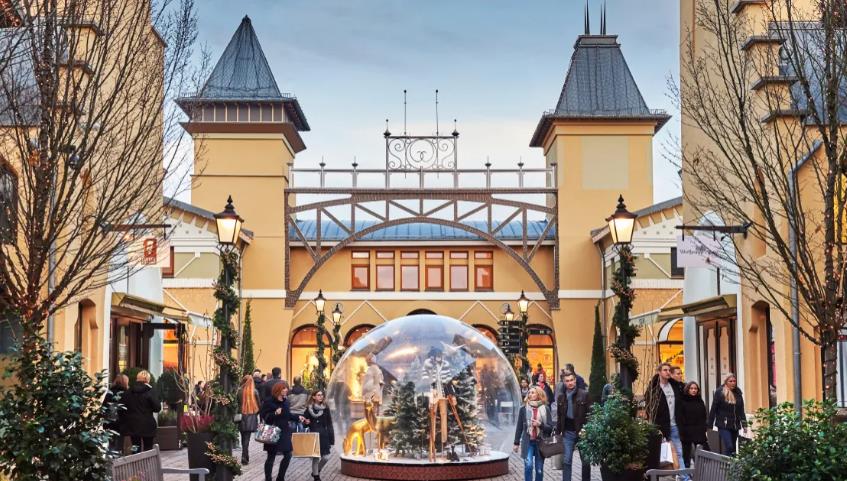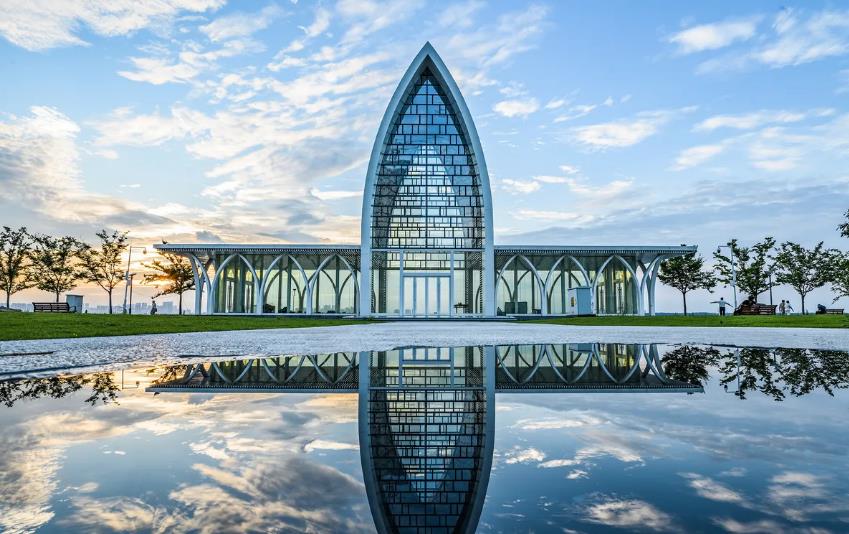https://om.trip.com/moments/destination-nai-harn-beach-2031541/
App
Customer Support
Find Bookings
2025 Nai Harn Beach Travel Guide: Must-see attractions, popular food, hotels, transportation routes (updated in July)

Nai Harn Beach 인기 명소
All Trip Moments about Nai Harn Beach
Phuket: A Culinary Tapestry Woven from the Sea and Spice
#slowlifephuket More than just stunning beaches and vibrant nightlife, Phuket offers an adventure that unfolds entirely on the palate. Its cuisine is a vibrant, complex tapestry, reflecting centuries of trade, migration, and the island's unique geography. Forget the notion of monolithic "Thai food"; Phuket's culinary scene is a symphony of Southern Thai intensity, Peranakan (Straits Chinese) heritage, Muslim traditions, and the ever-present bounty of the Andaman Sea, creating a diverse and unforgettable dining experience. The foundation is unmistakably Southern Thai, renowned for its bold, fiery character. Here, fiery bird's eye chilies meet a complex sourness from tamarind and lime, balanced by the salty depth of fermented fish and shrimp pastes (nam pla, kapi, gapi). Signature dishes like Gaeng Som Pla (a sour, spicy fish soup) or Kaeng Tai Pla (an intense, fermented fish intestine curry not for the faint-hearted) showcase this thrilling complexity. Massaman Curry, though found throughout Thailand, takes on a unique Phuket character, its rich, nutty gravy often infused with locally sourced spices like cardamom and cinnamon, reflecting the island's historic trade links. But the defining thread is Peranakan heritage. The descendants of Chinese immigrants who settled in Southeast Asia centuries ago brought their culinary traditions, which melded beautifully with local ingredients and Malay influences. The result is a distinct Phuket Peranakan cuisine, locally known as "Bab" food. Stews and braises feature prominently: Muu Hong (stewed pork belly in a dark, sweet soy sauce) is melt-in-your-tender perfection. O-Tao is a unique local delight – a savory, crispy omelette studded with taro root, crispy pork skin, and fresh seafood. Mee Hokkien showcases the fusion – thick yellow noodles stir-fried with eggs, seafood, greens, and pork, seasoned with both soy sauce and Thai chili paste, achieving a perfect savory-umami balance. Dishes often incorporate local vegetables like lor bak (Chinese chives) and feature complex spice pastes ground fresh daily. The seafood is, unsurprisingly, phenomenal and forms the backbone of countless dishes. Fresh catches land daily at piers like Rawai or Chalong, ensuring unparalleled quality. From simple grilled pla kapong (sea bass) with chili-lime sauce to complex curries brimming with crab, prawns, and squid, the sea's bounty is celebrated in endless variations. Don't miss the ubiquitous Tod Mun Pla (spicy fish cakes) or the succulent Goong Pao (grilled river prawns), often served whole with a fiery dipping sauce. Beachfront restaurants offer the quintessential experience – choosing your fish straight off the ice, then having it cooked to your preference while your feet dig into the sand. Adding further depth is the island's significant Muslim community, particularly in older towns like Phuket Town. Their influence shines through in fragrant Massaman and Green curries, rich coconut milk-based soups (gaeng), and deliciously spiced grilled chicken (gai yang) often found near mosques or markets. Satay skewers – grilled chicken or beef marinated in turmeric and spices, served with sweet peanut sauce and ajaat cucumber relish – are a popular street food staple reflecting these culinary traditions. The experience isn't confined to upscale restaurants. Street food is the lifeblood of Phuket's food culture. Evening walking streets like Chillva Market or Sunday Street in Phuket Old Town explode with stalls offering incredible variety: piping hot Khanom Jeen (fermented rice noodles with various curries), crispy Roti flatbreads served sweet or savory, Pad Thai with its perfect tang, grilled meats on sticks, exotic fruits like mangosteen and durian, and countless sweet treats like Kanom Krok (coconut custard pancakes). Exploring these markets is essential for tasting the true breadth and energy of Phuket's cuisine. Moreover, Phuket embraces international influences. Decades of tourism have brought high-end restaurants offering Italian, French, Indian, Japanese, and more. Yet, true diversity lies not just in imported styles, but in how local chefs experiment, sometimes incorporating international techniques or ingredients into traditional Phuket frameworks. To dine in Phuket is to travel through its history and geography. From the fiery jungle curries and intricate Bab stews to the pristine grilled seafood and bustling street food alleys, every bite tells a story of cultural confluence. It’s a cuisine defined by its diversity – bold yet balanced, ancient yet dynamic, always centered on the vibrant flavors of the south and the abundant Andaman Sea. It’s not just a meal; it’s a deep dive into the island’s soul, one exhilarating, flavor-packed dish at a time.MaxSNai Harn Beach Play Book: "Absolute" Paradise of Phuket
#cityplaybook Nai Harn Beach is one of Phuket's most beautiful and serene destinations, offering a perfect blend of natural beauty and tranquility. Located on the southern coast of Phuket, Thailand, this beach is renowned for its soft white sand, crystal-clear waters, and lush green surroundings. Natural Beauty of Nai Harn Beach The beach stretches along a picturesque bay, bordered by coconut palms and tropical greenery. The turquoise waters gently lap the shore, making it ideal for swimming and snorkeling. The nearby Nai Harn Lake adds to the scenic charm, reflecting the clear blue skies. Activities to Enjoy! Swimming & Snorkeling The calm waves make swimming safe for families. Coral reefs offshore provide excellent snorkeling opportunities. Surfing & Water Sports During the monsoon season, the waves attract surfers. Kayaking and paddleboarding are popular activities. Relaxation & Sunbathing The soft sand is perfect for beach lounging. Many visitors enjoy yoga sessions by the shore. Attractions Near Nai Harn Beach Promthep Cape – A famous sunset viewpoint. Ya Nui Beach – A smaller, quieter beach nearby. Nai Harn Buddhist Temple – Adds cultural depth to the visit. Best Time to Visit The dry season (November to April) is ideal, with sunny skies and calm seas. The monsoon season (May–October) brings occasional rain but also larger waves for surfers. Nai Harn Beach is a must-visit destination for travelers seeking relaxation, adventure, and natural beauty. Its pristine sands, clear waters, and peaceful atmosphere make it a hidden gem in Phuket. Whether you’re swimming, surfing, or simply soaking in the tropical vibes, Nai Harn Beach promises an unforgettable experience.MaxSVisit to the very beautiful beach 🏖️
#beachtime Phuket niche cold beach glass sea 180-degree cliff sunset Nai harn beach, located in the southernmost part of Phuket, has few people and large waves. The beach is almost full of foreigners. In the afternoons these two days, the waves are huge, and only a very small area is for tourists to go to the sea to play. Not far away is the willmill view point. Follow Google Maps to find Cliff sunset scenic spots. Unfortunately, you can't see the sunset in the rainy season recently, but the coastline scenic spots are still worth visiting. The experience is better than that of Patong Karenkata. There are too many people on the three major beaches.There is no Asian face on this beach in Phuket!! Unexpectedly, there are still beaches with pure Europeans and Americans in Phuket. It's really beautiful!! Friends, it's full of hotels. It's very quiet and there are few people! Just navigate to NAI HARN BEACH. #glass Sea #island Tour #that's the seaside I've always wanted to visit #niche Travel #vacation #travel #beautiful Scenery on the Journey #phuket Travel #phuket #phuket Travel #phuket Beach #vacationAdventure starNai Harn Beach, Phuket Province
🏝️ Nai Harn Beach, Phuket 🏝️ 📍Address: 0000, Rawai Subdistrict, Phuket, Phuket 83130 🏖️Environment: It is a small beach located almost at the end of Phuket Province. It is a beach with a wide, white sandy beach and clear sea water. It is a swimming spot, a stop for sailboats, and a resting spot for tourists. There are beach chairs and various water activities. There are lifeguards taking care of the beach. On the side of the beach is a luxury resort on the edge of the cliff. For those who drive, you can park in the temple's parking lot, Nai Harn Public Park, and on the roadside without any charge. 🕰️bOpening hours: 24 hours 💰Average price per person: Free #Get a discount without relying on luck #Nai Harn Beach, Phuket #Phuket attractions #Seaside tripเที่ยวแล้ว เที่ยวอีกGetting tanned on the Nai Harn beach
#thailand #phuketAdil_nihaoNaihan Beach
🌊✨ is one of the most tranquil and beautiful beaches in Phuket. Ideal for those who enjoy a relaxed atmosphere, this beach boasts clear waters, fine white sand, and surrounding green mountain views 🏞️. Unlike other popular beaches, it is not crowded, allowing for a truly restful experience 😌. Whether you want to stroll along the shore, sunbathe, or watch the sunset 🌅, this is the perfect spot. • The water here is exceptionally clear and clean 🏖️. • The long beach is often deserted, providing a lot of privacy 💆♀️. • There are seaside restaurants offering fresh and delicious food 🍤. • The atmosphere is perfect for taking beautiful photos or meditating to absorb natural energy 🧘♀️. Caution: The waves can be strong at times, so if you plan to swim, please be careful and check the weather conditions beforehand 🌬️.ตามใจอิเที่ยวไหนNai Harn Beach
#PhuketTravel 🖼️ The place shown in the picture is Nai Harn Beach. On the right side, if you look at the sea, it is a passageway to Laem Krating. Anyone who goes to Laem Krating, I must say that everyone must stop by this spot!! The angle where we took the picture is behind the first viewpoint. You can see a wide and very beautiful beach. ✨ Interesting things: There is a natural hot spring pool, but I don't recommend soaking in it because the water will probably be very satisfying🤣 (It's hot from the sun.) 🗣️ Recommendation: Wear comfortable shoes with ankle straps because the way to go is quite steep and has a lot of rocks. 🛵🚗 How to get there: Private car / motorcycle #UnseenThailand #UnseenSouth #UnseenPhuket #Thailand #phuketthailand #Phuketตามใจอิเที่ยวไหนNai Harn Beach
#tripdiscount It is a beautiful and relaxing beach. It is near tourist attractions such as Yanui Beach, Windmill Viewpoint, and Promthep Cape Viewpoint. The beach may not be very long, but the sea water is inviting and clear. It is especially beautiful when the sun is about to set. It is a beach that I like because of the atmosphere of the sea and the mountains around it. Parking is also convenient.LoveEat LoveTravel2Sunny day at nai harn
Sometimes, it’s just perfect to grab a cup of favorite coffee and head out for a walk along the beach. The sound of the waves crashing, the fresh breeze, and the salty scent in the air make for the ideal time to recharge and appreciate the moment. Walking on the sand, feeling the gentle warmth underfoot, and watching the horizon meet the sky can be incredibly calming. Whether you're alone or with friends, these simple pleasures remind us of the beauty in life's little moments. Take a break, sip your coffee, and let the ocean's rhythm soothe your soul. #BeachWalk #CoffeeWithAView #EnjoyLifeSonyaNovaThe Gallery Hotel Nai Harn Phuket
The Gallery Hotel Nai Harn is a newly opened 4-star hotel located at Nai Harn Beach, Phuket. This hotel focuses on providing happiness through spacious and diverse accommodations 🏨, complete with excellent amenities, outstanding service, and top-notch security 🌟. In addition to the beauty of Nai Harn Beach, the front of the hotel offers a long view of the lake 🌅, where guests can enjoy sunrise and sunset walks or exercise with stunning natural scenery 🏞️. The amenities at The Gallery Hotel Nai Harn include: - Fitness center 💪 - Large outdoor swimming pool 🏊♂️ - Picasso Restaurant 🍽️ - Kids Club 👶 - Pool Bar 🍹 - Da Vinci Sky Bar 🌌 If you're looking for a stylish and joyful retreat in Phuket, The Gallery Hotel Nai Harn is an option you shouldn't miss! 🌴ตามใจอิเที่ยวไหนWyndham Grand Nai Harn Beach Phuket
For anyone looking for accommodation in Phuket, I recommend this place: “Wyndham Grand Nai Harn Beach Phuket”. It is a modern style accommodation with a swimming pool surrounding the hotel. The accommodation is spacious, shady, and private. The facilities are complete. There are also many beautiful photo spots here, perfect for content lovers. 📍Location: Soi Nai Harn, Rawai Subdistrict, Phuket #Wyndhamgrandnaiharnbeachphuket #Wyndhamgrand #Naiharnbeach #Phuket #TravelReview #AccommodationReview #PhuketTravelหมู่สายชิวส์Nai Hairn beach - a must
Everything you need here.. beautiful beach, trees for hammock, volleyball, restaurants and massage !#mytravelhacksLady VVFloating in Paradise!
Getting There - Attractions - Hotels - Food & Restaurants - Shopping -_TS***a0Hiking site in Naiharn Phuket
On the righ side of Naiharn beach you will see the big mountain with black rock up in too. the trail start from Naiharn lake and it takes only 20-30mins to get this stunning viewMarangsur

Popular Nai Harn Beach Topics

2025 Recommended Guides in Nai Harn Beach (Updated July)
9 posts

2025 Recommended Attractions in Nai Harn Beach (Updated July)
9 posts

2025 Recommended Hotels in Nai Harn Beach (Updated July)
3 posts
Post
더 많은 추천 보기
Popular Trip Moments
Panwaburi Beachfront Resort – A Quiet Tropical Escape | Big Buddha & Golden Buddhas in Phuket | Upside Down your WORLD! | A Capture for Soul☺️ | GRAPH Phuket ศิลปะกาแฟศิลป์ในอาคารชิโน‑โปรตุกีส | Phuket: A Culinary Tapestry Woven from the Sea and Spice | The Gentle Rhythm of Rawai: A Sanctuary of Slowness in Phuket | Estella Maikhao Beach | VERANDA RESORT PHUKET - AUTOGRAPH COLLECTION | A Panoramic Stunning Scenic | Stair that Matters | Cape Krating, Phuket ☀️ | Phuket: Island Paradise for a Slow Pace | Phuket Travel Guide: 5-Day Itinerary for a Long Holiday | DoubleTree by Hilton โรงแรมใกล้ชายหาดป่าตอง | It’s All in the Details – Old Town Phuket | Phuket accommodation | Review of a catamaran cruise to Koh Maiton, Phuket | Thailand's must-visit destination: The enchanting Wat Chalong Temple | Wat Thepwararam (Manik) | Wandering Through Phuket Old Town | Accommodation near Central Festival Phuket | Sun, Sand and a Surprise at Patong Beach, Phuket | Phuket Old Town | Tiger kingdom in phuket | Old Town Phuket – Where Portugal Meets Thailand | Teenager Pool Villa | Chill days in paradise or 3 days of slow life in Bali | 🌿☕✨Baboon Phuket | 🐵🙊🙈Three Monkeys
Recommended Attractions at Popular Destinations
Attraction near Bangkok | Attraction near Manila | Attraction near Tokyo | Attraction near Taipei | Attraction near Hong Kong | Attraction near Seoul | Attraction near Kuala Lumpur | Attraction near Los Angeles | Attraction near Shanghai | Attraction near New York | Attraction near Shenzhen | Attraction near Osaka | Attraction near Singapore | Attraction near London | Attraction near Guangzhou | Attraction near San Francisco | Attraction near Beijing | Attraction near Macau | Attraction near Bali | Attraction near Jakarta | Attraction near Paris | Attraction near Ho Chi Minh City | Attraction near Istanbul | Attraction near Phuket | Attraction near Chicago | Attraction near Seattle | Attraction near Toronto | Attraction near Orlando | Attraction near Cebu | Attraction near Chiang Mai
Popular Restaurants in Phuket
Ginja Taste | Coast Beach Club & Bistro Phuket | PRU | Blue Elephant Phuket | La Sala | Sizzle | SILK Restaurant & Bar | Bubbles Restaurant | On the Rock | The Boathouse Restaurant | After Beach Bar & Restaurant | Raya Restaurant | Briley Chicken and Rice | Saffron Phuket | Patong Corner Restaurant | on the hill karon restaurant | Catch Beach Club | Natural Restaurant | One Chun Cafe & Restaurant | Pan Yaah Seaview Cafe Restaurant & Bar | Mom Tri's Kitchen | Two Chefs Karon Beach Branch | Song Pee Nong 2 | Poo Nurntong Restaurant | The Corner Restaurant | Tu Kab Khao Restaurant Phuket | Sandbox Beachfront Bar & Eatery | Pan Bistro | Thai Library at Trisara | Tunk-ka Cafe Phuket Hilltop Restaurant
Popular Ranked Lists
Popular Best Things to Do in Dongying | Popular Must-Visit Restaurants in Yangzhou | Top 8 Best Things to Do in Chongzuo | Popular Premium Hotels Near Saint-Herblain | Popular Luxury Hotels Near Pua | Popular Luxury Hotels Near Sorrento | Popular Best Things to Do in Guang'an | Top 3 Best Things to Do in Zhoukou | Popular Premium Hotels in Altay City | Popular Must-Visit Restaurants in Kyoto | Popular Premium Hotels in Wake County | Popular Must-Visit Restaurants in Hanoi | Popular Must-Visit Restaurants in San Francisco | Top 3 Best Things to Do in Zaozhuang | Popular Best Things to Do in Wuhai | Popular Luxury Hotels Near Pitesti | Popular Luxury Hotels Near Balbieriskio seniunija | Top 3 Best Things to Do in Panzhihua | Popular Luxury Hotels Near Evros | Popular Premium Hotels in Alghero | Popular Luxury Hotels Near Sam Son | Popular Must-Visit Restaurants in Jeju | Popular Must-Visit Restaurants in Chaozhou | Popular Luxury Hotels Near Bneid Al Qar | Popular Luxury Hotels Near Fishers | Top 6 Best Things to Do in Hezhou | Popular Must-Visit Restaurants in Athens | Popular Must-Visit Restaurants in Koh Samui | Popular Best Things to Do in Jurong | Popular Must-Visit Restaurants in Melbourne
Payment Methods
Our Partners
Copyright © 2025 Trip.com Travel Singapore Pte. Ltd. All rights reserved
Site Operator: Trip.com Travel Singapore Pte. Ltd.
Site Operator: Trip.com Travel Singapore Pte. Ltd.